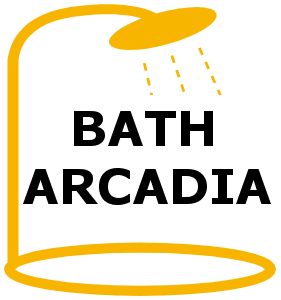Water will essentially splash around the faucet depending on its nature and use. Water can be observed splashing around the faucet but cannot prevent it. Regular use such as washing dishes, washing hands, or using water may cause splashing. All we have to do is wipe it up, and that’s it.
A general concern or misconception about splashing is that water will eventually cover the entire countertop. The vital causes of splashing are the position of the faucet and the high water flow rate. Other factors for splashing water include the depth and width of the sink.
Cause of Water Splashing
The most common cause of splashing water is high flow rates. For example, the water flow rate in the bathroom sink should be approximately 1.5 gallons per minute (GPM). Ensure the faucet is designed for a bathroom sink, not a bathtub or kitchen sink. Bathtubs and kitchen faucets have a higher flow of water, which can cause water to splash in the sink.
The pressure is more concentrated when the water flows as a direct stream (without an aerator). This concentration causes a splash as the pressure is higher in all areas it comes into contact with.
Incorrect placement of the faucet is another factor in water splashing. Some faucets are very tall and are positioned too high above the edge of the sink. Ensure the tap is no more than a few inches from the edge of the sink. You should also ensure that the faucet is as near to the center of the sink as possible.
This post will explain to you how to stop splashing your bathroom sink; and the different ways in which way splashing can happen.
Read on to learn more.
Stop Sink Spalashing by Using an Aerator
Installing an aerator on the tip of the faucet; is one of the most common and easy ways to eliminate splashing your bathroom sink, but not the only one. The key purpose of this device is to reduce the pressure of the water leaving the tap.
What is a Faucet Aerator?
Have you ever noticed that there is a small screen attached to the tip of the faucet? This feature is found in most modern faucets and is called an aerator. An aerator is a device at the end of a faucet that allows air to mix with water. Aerators help slow down the flow of water and reduce the chance of water splashing. They are designed to mix a stream of water with air, reducing the water flow from the tap.
How does an Aerator Help Reduce Water Splashing?
Aerators are used to reduce the amount of water dripping from faucets in the kitchen or bathroom sink. It also shortens the spraying distance of water falling from the faucet into the sink. It does this by creating multiple smaller streams in the main faucet stream. Thus the amount of splashing that occurs when the main water stream enters the sink can be reduced.
When an aerator is installed on the faucet, the concentration is distributed into various droplets that fall into several points. These individual drops have little effect on the surfaces they come into contact with.
If It’s Still Splashing
If you installed an aerator and you find that water is still splashing, there is a possibility that high-pressure water is entering your home.
Even if you have an aerator in the sink and set it to spray mode, it still tends to splash a bit.
If you have high water pressure, you have several options.
Setting a Pressure Relief Valve
This device can be attached to the water meter in your home; this valve will control the total water pressure in your home.
Do not Fully Open the Faucet
Turn on the faucet half or three-quarters only when washing dishes or washing hands. It will allow you to get a lower flow rate to reduce splashing. A single-handle faucet may be sensitive, so using a double-handle faucet may be convenient.
Shutoff Valve Adjustment
You can simply reduce the amount of water passing through by keeping the shutoff valve under the sink 1/4 or 1/2 closed.
Other Causes for Sink Splashing
For the sink to splash, you must have a configuration that enables this. In some instances, water splash occurs from the incorrect faucet installation, the inappropriate sink, or a combination of both.
Narrow and Depthless Washbasin
Some washbasins are designed too shallow and are not to be used correctly. They are usually found in your bathroom. However, this style can be a rather decorative element in your home.
The simple answer is that; if the water moves a shorter distance after it bounces off the sink, you are left with a mess.
Tips:
A faucet with a short spout will keep water in a direct path to the sink drain. However, the water will have less space to splash, and more water will flow into the drain directly.
Bowl Shaped Sink
A bowl-shaped sink combined with a too-large faucet causes the water to pour out along the bowl’s curvature rather than at its bottom.
Tips:
Use a faucet with a shorter spout; the water will drain directly into the drain.
Final Words
If you can’t afford to buy a new faucet or can’t change the configuration of your sink, and your aerator isn’t working, there are still a few things you can do.
The first thing to do is buy a sink grate. It comes in various sizes, so you only need to measure the inner width and length of the sink and then choose the right size for buying.
The grate can help reduce splashes by dispersing water when it hits.
It works well because the water separates when it hits the grate and splashes sideways into other parts of the sink instead of hitting a flat surface that tends to bounce back on you.
If you still feel that splashing is unavoidable, you can buy what is known as splash protection, a soft cloth made with soft material that; can be worn over the edge of the sink.
This material will trap water and prevent it from accumulating on the counter or the floor. There is also a fabric designed to be slipped over the faucet and handles, which will trap water that might spray in that direction.

